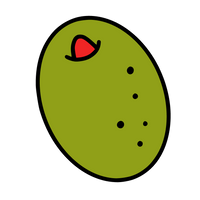
Let’s take it back, way back! To a time before refrigerators, supermarkets, and vitamin pills.
Across continents and cultures, humans turned to fermentation to preserve the harvest, nourish their bodies, feed families, and build communities.
Those early days showed hunter-gatherers using stone mortars for fermentation dating back at least 13,000 years! [1]
Now referred to as ancestral living, fermentation isn’t just a new food trend. It’s a return to our roots with a gut health comeback.

We’ve Been Fermenting Since Forever
Fermented foods have only continued to grow in popularity. Offering nutrients, probiotics, enzymes, and a tasty, crunchy approach to eating your way to a thriving, diverse gut microbiome.
But where do fermented foods come from? Let’s dive into the origins of fermentation, including a shout-out to our favorite tasty, fermented dishes from around the globe!
From Israel With Love (and Pickles)
Hunter-gatherers aren’t the only ones with deep ties to fermentation.
Our co-founder, Shai, started OMP because he missed his childhood days spent snacking on his grandmother’s homemade fermented kosher dill pickles.
Growing up in Israel, Shai’s grandmother taught him how to harvest a garden and eat a seasonal bounty.
Their kitchen was always filled with drying garlic, herbs, and spices. But it was the taste and smell of traditional fermentation that filled their home (and his memories) the most.
Shai’s love for fermentation was generational, passed down from his grandmother with love.
It all started with being homesick… and a craving for his grandmother’s ferments.
After moving to the U.S., Shai found himself missing his grandmother and her fermented foods. Their shared connection in the kitchen was cultural preservation and an act of love
Eventually, OMP's co-founders began experimenting in their home kitchen with wild fermentation. It didn’t start as a business model; it was just a way for them to nourish their bodies.
The very first fermented pickle at OMP was made using Shai’s grandmother’s recipe. No wellness blogs or food trends required.
The idea of re-creating grandma’s pickles, combined with their at-home experimentation, ultimately grew to over 40+ fermented foods, which we now ship to homes across the country!

Learn More: How OMP Came To Be
A Global Tale of Fermentation
Before our ancestors were hauling ice blocks into their homes to keep their food fresh, fermentation was the go-to method for preservation.
Fermentation allowed seasonally harvested favorites to stay fresh for longer while keeping food safe for consumption.
A bountiful meal could show up on the table, even through seasons of scarcity and famine.
Whether it was cabbage in crocks, milk in clay pots, or olives in brine, fermentation was a natural form of conserving goods. Retaining fresh, flavorful food with the added benefit of gut-healthy probiotics
Different Cultures with the Same Idea: Thriving Through Fermentation
Around the world and along the way, every culture began to develop its own signature take on fermentation.
Food went from a form of survival to representing a diverse range of flavors and traditions with the added benefit of live cultures (hey there probiotics!).
Many of those early fermented food traditions still live on today. Here’s a quick glimpse into fermented foods around the world.

Diverse Nations of Fermentation
- Korea - Kimchi is a cornerstone of Korean cuisine; it’s eaten daily and helps support gut health.
- Germany & Eastern Europe - Sauerkraut, of course! Fermented cabbage is packed to last through long, cold winters, keeping families nourished.
- Greece, Italy, Israel - Olives in the Mediterranean often contain live cultures, fermented in brine with herbs and spices, eaten as a tasty everyday probiotic.
- India - Pickled Mango and vegetables are fermented with spices and oil to preserve nutrients, offering a dose of antioxidants and flavor.
- Japan - Probiotic-rich staples like Miso and Natto are packed with enzymes, often aiding in digestion and longevity.
- Ethiopia & Nigeria - Fermented grains, such as injera (Ethiopia) and ogi (Nigeria), help support gut and metabolic health.
- Russia & Middle East - Kefir and Yogurt (labneh) are milk-based ferments rich in probiotics, enzymes, and B vitamins.
It’s no coincidence that every culture has a ferment. Fermented foods were passed on from generation to generation as a form of survival; it’s ancient wisdom, all bottled up in a shelf-stable jar.

Fermentation is Our Past And Our Future
The art of fermentation is as old as civilization itself. In ancient Egypt, communities ate dairy products, fermented bread, and drank beer. In China, an analysis of ancient pottery jars showed fermented products of rice, honey, and fruits, dating all the way back to the seventh millennium B.C. [2]
Food can be medicine, culture, and memories, all in one. That’s the magic of fermentation.
Our ancestors figured out that fermented foods lasted longer on a shelf than pickled foods, but they didn’t know exactly what happened to their food during the fermentation process.
After packing jars and pots with vegetables and covering them with a saltwater brine mixture, bacteria (lactobacillus) began to convert sugars into lactic acid, breaking down carbohydrates, fats, and proteins in the process.
The result was food with a new flavor and texture that could be kept on a shelf through long periods of food scarcity.
Fermented foods are a gift from the past, and a party for your gut!
Why We Need Ancestral Eating Now More Than Ever
Today’s ultra-processed, on-the-go, sugar-loaded foods are gut-wrecking and disconnecting us from our roots.
The average American consumes 10X more sugar than they did over 100 years ago. [3]
When sugar enters the gut microbiome, it can promote the growth of (bad) bacteria, often leading to inflammation.
Our ancestors didn’t need probiotics in a capsule to keep their gut balanced and ward off inflammation; they ate fermented foods daily. That is, after growing and harvesting their own food.
What Your Great-Great-Grandparents Knew… Science Has Now Confirmed
What the generations before us didn’t know, science can now confirm: a diet rich with fermented foods supports immunity while creating a healthy gut with a thriving, diverse microbiome.
This study shows that eating fermented foods = strengthened immunity, and improved gut function, all while minimizing gut-induced inflammation, managing stress, and reducing risks of chronic disease. [4] Fermented foods are doing the absolute most!
Dive in: OMP’s Homesteading and Ancestral Diet Blog
It’s time for us to take a page out of the ancestral diet playbook and slow down, simplify, and get back to eating the same gut-loving ferments of those who came before us.
But you don’t need to get your hands on a clay pot or mortar and pestle, promise!
Your Ancestors Did It, Your Gut Still Wants It
Whether you’re snacking on garlic pickles, olives, kimchi, or sauerkraut, you’re reconnecting with ancestral wisdom in every bite.
Fermented Foods Naturally Provide:
- Probiotics & enzymes
- Electrolyte Minerals
- B Vitamins (including B12)
- Vitamin C & K2
Bring the tradition of ancestral fermentation right to your doorstep with OMP's handcrafted ferments, made the old school way.
Ready to Enjoy an Ancestral Diet? Build Your Box of Ferments with OMP
Fermentation is kinda a big dill, and we’ve written about it extensively here at OMP.
If you want to dive deeper into the origins of fermentation and the importance of snacking on probiotics, check out these blog posts:
- How Olive My Pickle Came to Be
- Homesteading and Ancestral Diets
- Top 11 Probiotic Foods
- Top 7 Health Benefits of Fermented Foods
- Probiotic Foods vs. Supplements
Resources
- Mannaa M, Han G, Seo YS, Park I. Evolution of Food Fermentation Processes and the Use of Multi-Omics in Deciphering the Roles of the Microbiota. Foods. 2021 Nov 18;10(11):2861. doi: 10.3390/foods10112861. PMID: 34829140; PMCID: PMC8618017.
- Mannaa M, Han G, Seo YS, Park I. Evolution of Food Fermentation Processes and the Use of Multi-Omics in Deciphering the Roles of the Microbiota. Foods. 2021 Nov 18;10(11):2861. doi: 10.3390/foods10112861. PMID: 34829140; PMCID: PMC8618017. Di Rienzi SC, Britton RA. Adaptation of the Gut Microbiota to Modern Dietary Sugars and Sweeteners. Adv Nutr. 2020 May 1;11(3):616-629. doi: 10.1093/advances/nmz118. PMID: 31696209; PMCID: PMC7231582.
- Hill C, Tancredi DJ, Cifelli CJ, Slavin JL, Gahche J, Marco ML, Hutkins R, Fulgoni VL 3rd, Merenstein D, Sanders ME. Positive Health Outcomes Associated with Live Microbe Intake from Foods, Including Fermented Foods, Assessed using the NHANES Database. J Nutr. 2023 Apr;153(4):1143-1149. doi: 10.1016/j.tjnut.2023.02.019. Epub 2023 Feb 22. PMID: 36822397; PMCID: PMC10196563.
DISCLAIMER: THIS WEBSITE DOES NOT PROVIDE MEDICAL ADVICE
The content on this website is for informational or educational purposes only and does not substitute professional medical advice or consultations with healthcare professionals. Always seek the advice of your physician or other qualified healthcare provider(s) with any questions you have regarding a medical condition or treatment and before undertaking a new health care regimen.










